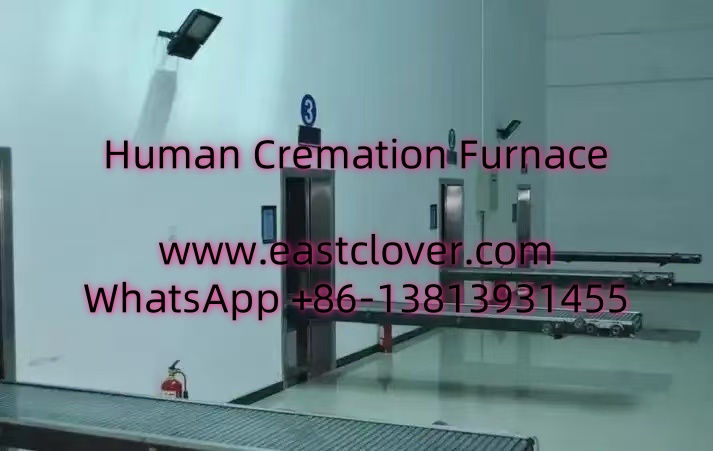Introduction to Cremation Furnaces
Cremation furnaces, also known as cremators, are specialized industrial equipment designed to efficiently reduce human or animal remains to bone fragments through high-temperature combustion. These systems are integral to the cremation process, which has become an increasingly popular alternative to traditional burials worldwide. Modern cremation furnaces are engineered to meet stringent environmental and safety standards, incorporating advanced technologies like emission control systems, automated temperature regulation, and energy-efficient designs.
Global Cremation Furnace Market analysis
The global cremation furnace market has witnessed steady growth over the past decade, driven by shifting societal attitudes, urbanization, and evolving environmental regulations. According to industry reports, the market was valued at approximately $450 million in 2022 and is projected to grow at a compound annual growth rate (CAGR) of 4.5% from 2023 to 2030. Key regions contributing to this growth include North America, Europe, and Asia-Pacific, with emerging markets in Latin America and Africa showing gradual adoption.
Key Market Trends
1. Rising Demand for Cremation
Public preference for cremation over traditional burial is rising due to factors such as cost-effectiveness, reduced land use, and environmental concerns. In countries like Japan and the United States, cremation rates exceed 75%, a trend mirrored in urban centers across Europe and Asia.
2. Technological Advancements
Manufacturers are investing in R&D to develop eco-friendly cremators with lower emissions and energy consumption. Innovations include dual-chamber systems for higher efficiency, real-time monitoring software, and filtration systems to capture pollutants like mercury from dental amalgams.
3. Sustainability and Regulatory Compliance
Strict emission regulations in regions like the European Union and North America have spurred demand for furnaces with advanced scrubbing technologies. Hybrid models combining gas and electricity are gaining traction, reducing reliance on fossil fuels.
Regional Market Dynamics
North America
The U.S. and Canada dominate the market, driven by high cremation adoption rates and the presence of major manufacturers like Matthews International Corporation and Thermax Group. Environmental regulations, such as the EPA’s Mercury Air Toxics Standards (MATS), have accelerated replacements of older equipment.
Europe
Europe is a mature market with strong demand for energy-efficient cremators. The UK, Germany, and France lead in adopting automated systems. The EU’s Circular Economy Action Plan promotes sustainable practices, further boosting innovation.
Asia-Pacific
Rapid urbanization in countries like China, India, and Japan fuels market growth. China’s cremation rate surpasses 50%, supported by government policies to conserve arable land. India’s market is nascent but expanding due to a growing middle class.
Challenges and Opportunities
Challenges
- High initial costs of advanced cremation systems.
- Cultural resistance in regions with strong burial traditions.
- Supply chain disruptions affecting raw material availability.
Opportunities
- Expansion into underserved markets in Africa and South America.
- Development of compact, affordable models for small crematories.
- Integration of AI and IoT for predictive maintenance and operational efficiency.
Future Projections
By 2030, the global cremation furnace market is expected to exceed $650 million, driven by aging populations, environmental awareness, and technological innovation. Automated, zero-emission cremators will likely become industry standards. Emerging economies will account for 30% of new installations, reflecting shifting demographics and urbanization trends.
www.southclover.com
The cremation furnace industry is at a pivotal juncture, balancing tradition with innovation. As sustainability becomes a global priority, manufacturers must continue developing efficient, compliant solutions to meet diverse regional needs. With cremation rates rising steadily, the market is poised for sustained growth, offering opportunities for stakeholders across the value chain.
FAQs
1. What factors determine the cost of a cremation furnace?
Costs vary based on capacity, technology (e.g., filtration systems), energy source, and compliance features. Prices range from $50,000 for basic models to over $500,000 for advanced systems.
2. How do cremation furnaces address environmental concerns?
Modern furnaces use scrubbers to filter particulate matter and neutralize harmful emissions. Electric models and renewable energy integration further reduce carbon footprints.
3. Which region has the highest cremation rate?
Japan leads globally, with a cremation rate of 99.97%, followed by Taiwan and Hong Kong.
4. Are pet cremation furnaces part of this market?
Yes, the pet cremation segment is growing rapidly, with specialized furnaces designed for smaller capacities and residential use.

Comments are closed